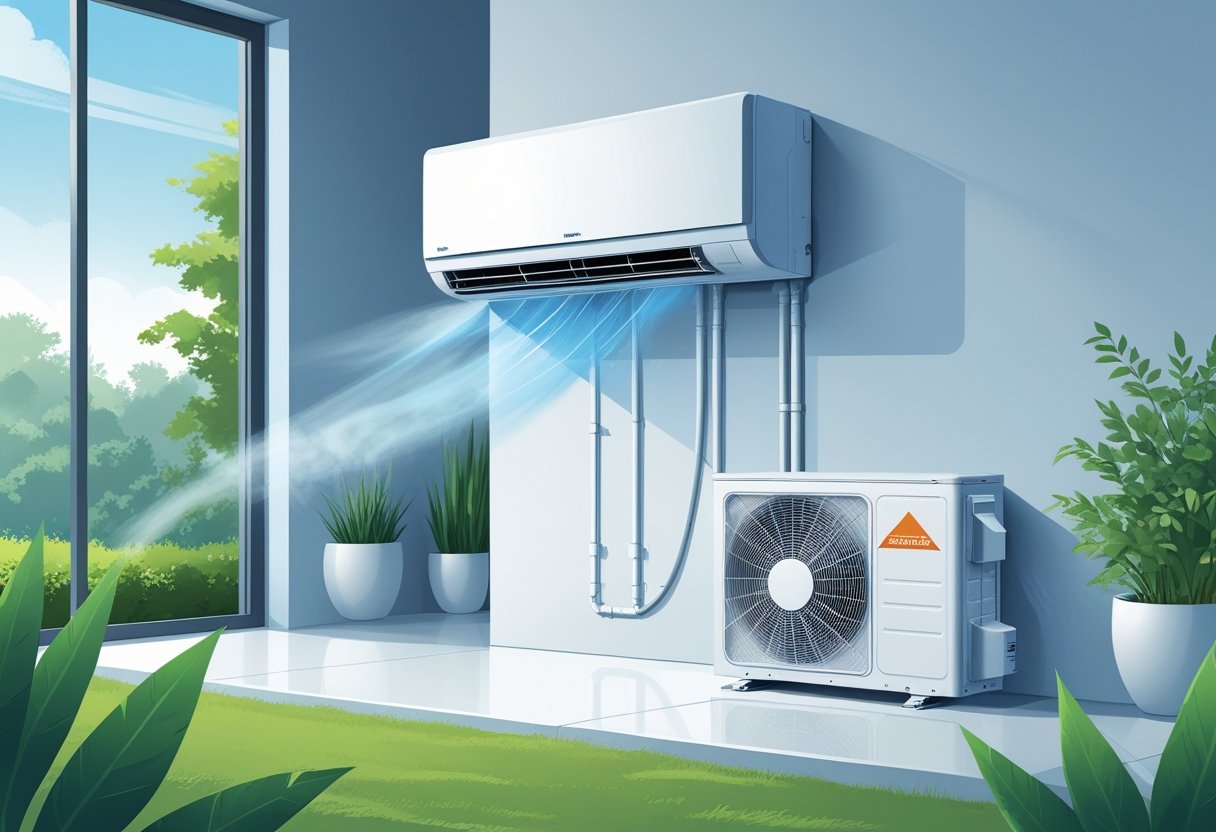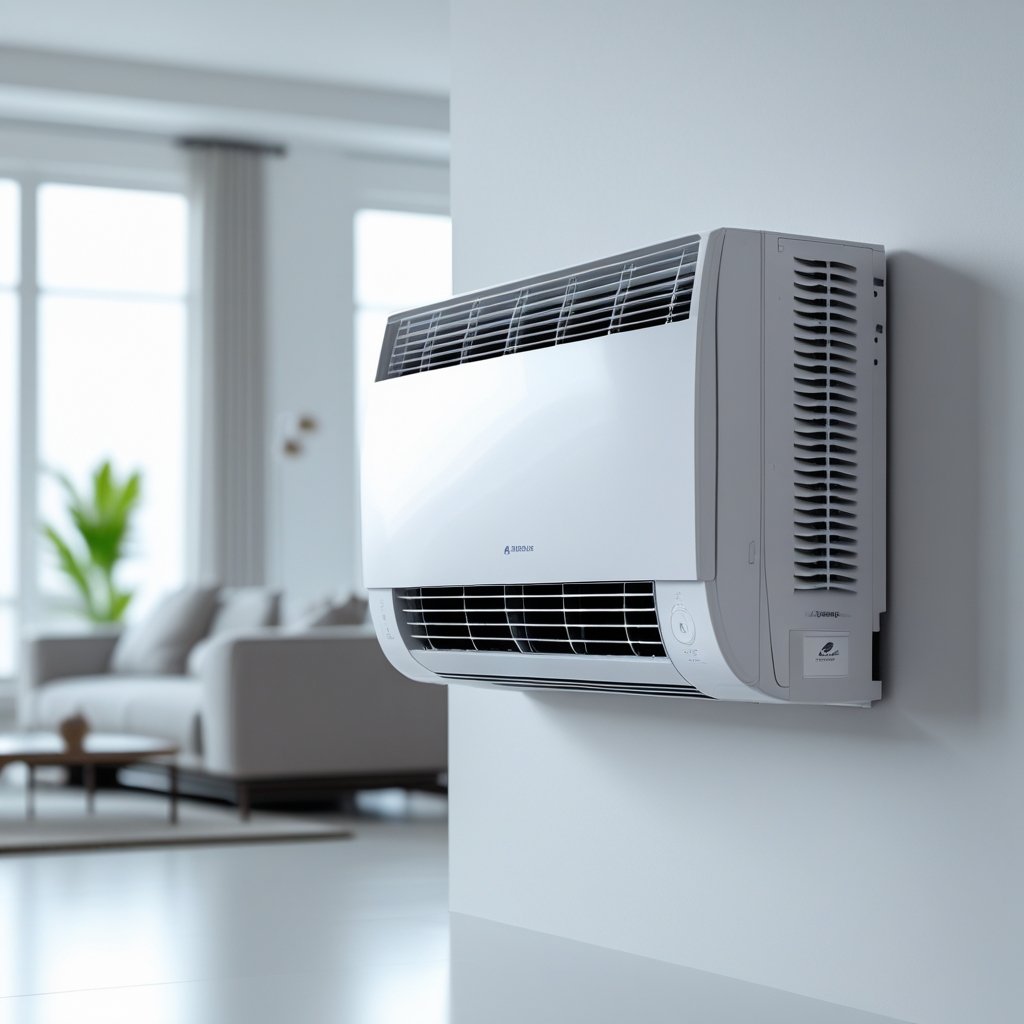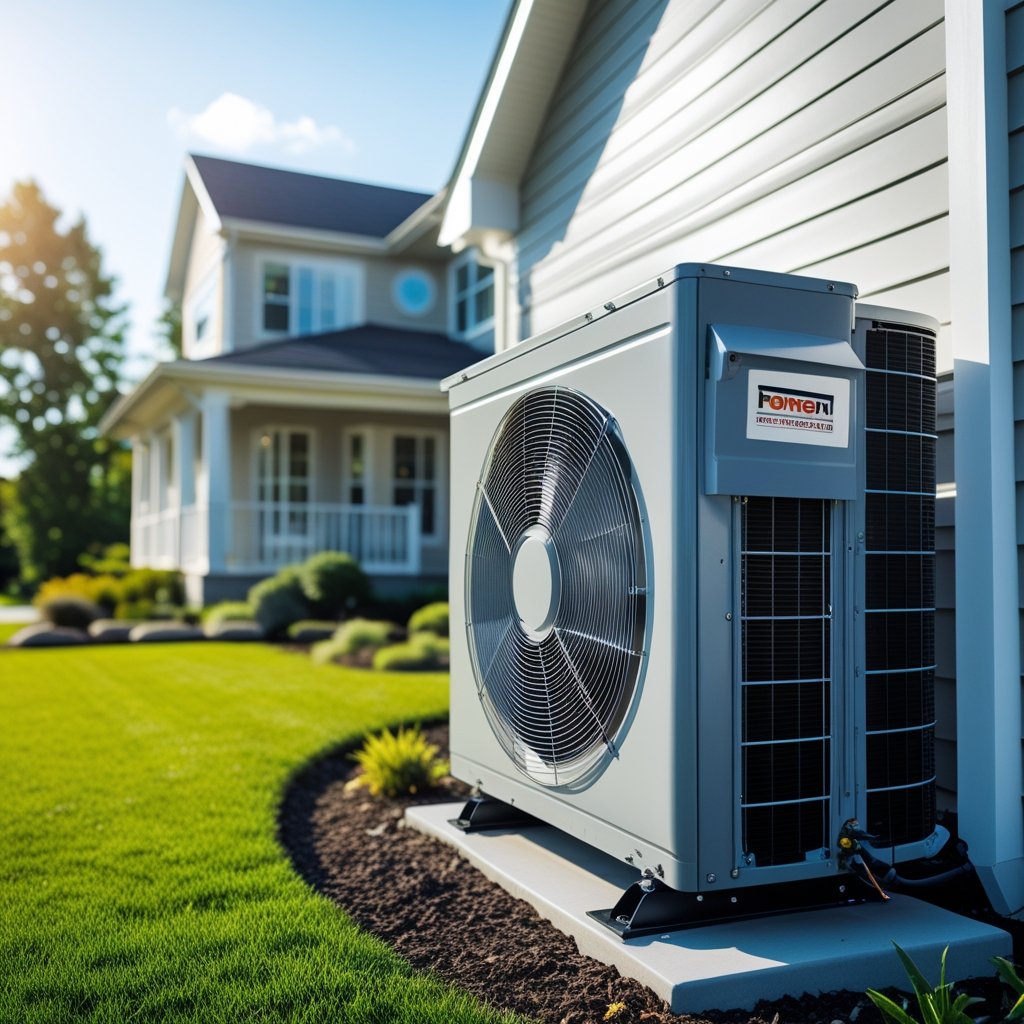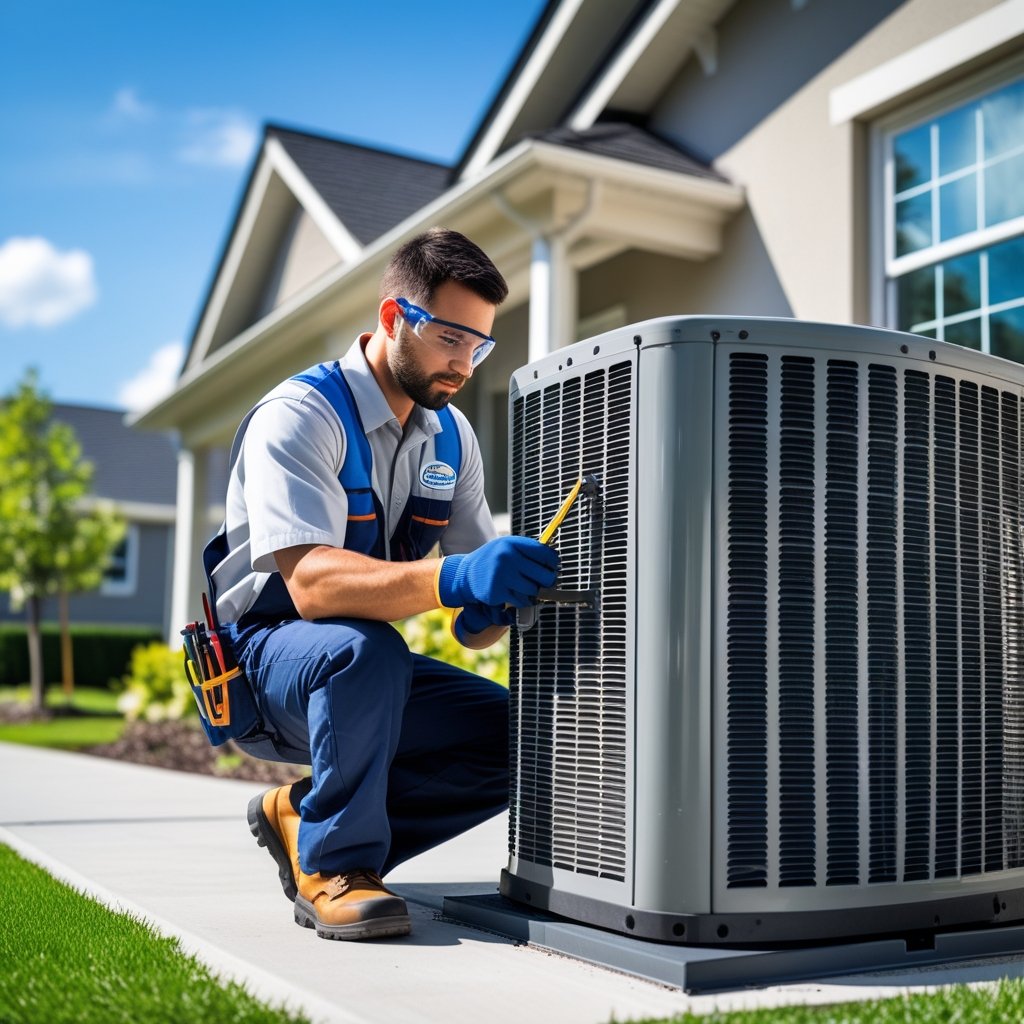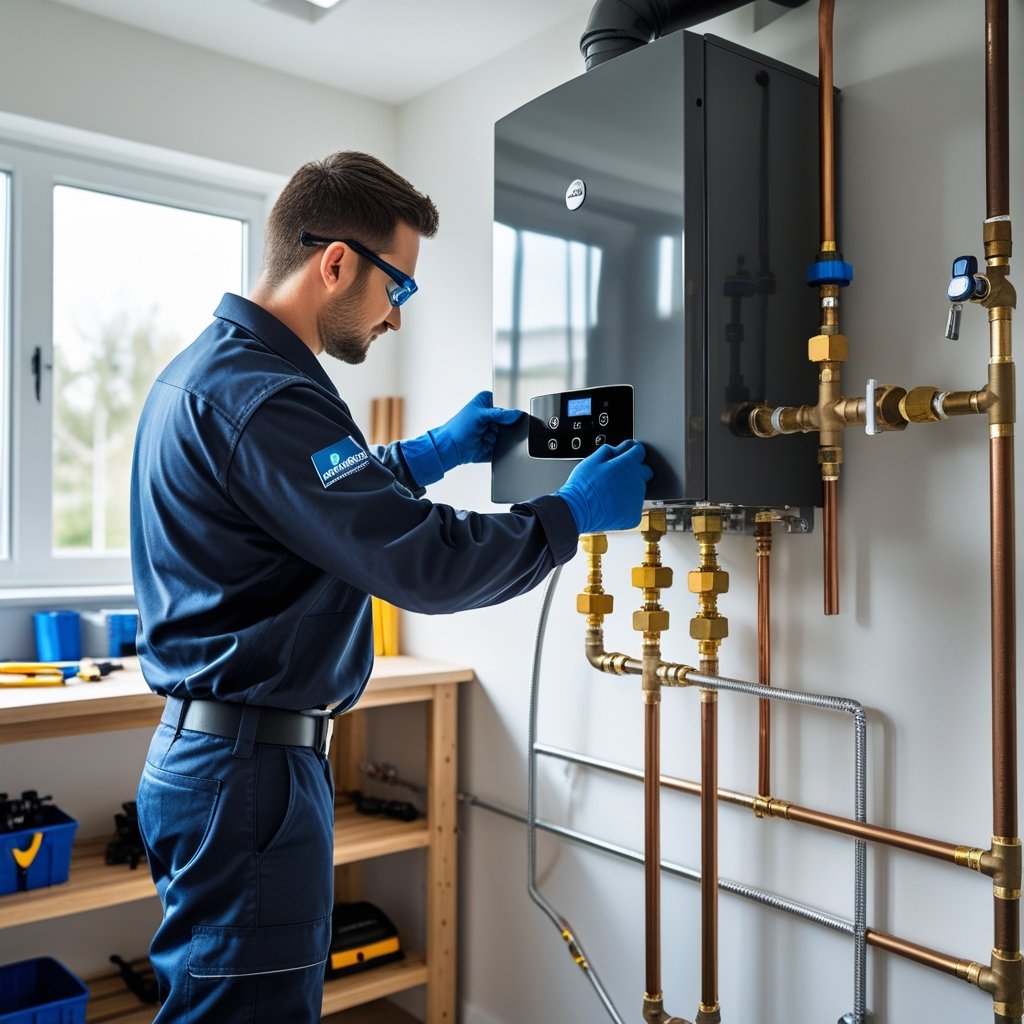Mini split systems have become a go-to for folks who want efficient heating and cooling—without the headache of ductwork. You get reliable zone control, so you only heat or cool the rooms you actually use. That can cut energy waste and lower your bills. These systems fit especially well in homes and businesses around South Central Pennsylvania, where installing traditional HVAC can be a pain.
At Leo Kob Co., we’ve watched mini splits make life easier and more comfortable for a lot of people. They’re pretty straightforward to maintain, and if you keep up with them, they’ll last for years—keeping you cool in the summer and warm in the winter. If you’re weighing your options, it helps to know how these systems work and what they really bring to the table.
How Mini Split Systems Work
Mini splits send air right where you want it. That means you stay comfortable without burning through energy. They use specialized components to deliver heating and cooling quietly and efficiently. There’s a variety of mini splits out there, each suited for different setups and needs.
Basic Components of Mini Splits
You’re looking at two main parts: the indoor unit and the outdoor unit. The indoor unit goes in your room and blows out the heated or cooled air. The outdoor unit has the compressor and condenser, which do the heavy lifting of moving heat in or out.
Copper pipes connect the two, carrying refrigerant that absorbs or releases heat. You also get a control panel or remote to set the temperature and mode. All these pieces work together, letting you fine-tune each room’s comfort—no ducts needed.
Cooling and Heating Mechanism
Mini splits don’t generate heat; they just move it around. In cooling mode, the refrigerant grabs heat from inside and dumps it outside. Flip it to heating, and the process reverses—it pulls warmth from the outdoors and brings it in.
This approach makes them efficient, especially for ductless homes. They respond quickly to temperature changes, and you can tweak each zone separately. Plus, they’re usually quieter than old-school HVAC, which is great if you’re trying to sleep or get work done.
Types of Mini Split Systems
You’ll find single-zone and multi-zone options. Single-zone systems handle one room or area. Multi-zone setups can cover several spaces, each with its own indoor unit and controls.
Some models include heat pumps for both heating and cooling. Ductless mini splits are especially popular since you don’t have to carve out space for ducts—saving money and keeping things tidy. And if you need installation or repairs, Leo Kob Co. has you covered in South Central Pennsylvania.
Advantages of Mini Split Systems
Mini splits give you an efficient way to heat or cool your home, and they’re flexible enough to fit into all sorts of spaces. You get more control over temperature, cleaner air, and a shot at lower energy bills. Honestly, they’re a solid choice for a lot of homeowners around here.
Energy Efficiency
Mini splits run on less energy than traditional systems because they skip the ductwork—so more of that cooled or heated air actually makes it into your rooms.
You might save up to 40% on energy costs with a mini split. They use inverter tech, which means they adjust power based on what the room needs, not just blasting at full speed all the time. That’s easier on your wallet and your equipment.
Many models qualify for local rebates or tax credits, which helps with upfront costs. And if you stick with routine maintenance—something Leo Kob Co. can help with—these systems stay efficient for the long haul.
Flexible Installation Options
Mini splits are way easier to install than central AC since you don’t need ducts. The indoor unit can go on a wall, ceiling, or floor, depending on what works best for you.
That’s a big plus if your home doesn’t have ducts, or if you’re looking to add heating to a finished basement or sunroom.
The outdoor compressor can sit up to 50 feet away from the indoor units, so you can tuck it out of sight and keep things quiet inside.
Since installation isn’t as invasive, it’s usually faster and less of a hassle than traditional systems. Leo Kob Co. can tailor the install to your space.
Improved Indoor Air Quality
Mini splits step up your indoor air quality with multi-stage filters that trap dust, pollen, and allergens—often better than central systems.
No ducts means you’re not dealing with the dust and mold that can build up in vents. That’s a win if you’ve got allergies or asthma in the house.
Keeping filters clean or swapped out is simple, and it keeps the air moving freely. Many models can also dehumidify, which helps stop mold and makes your home feel more comfortable.
Zoning and Temperature Control
A huge perk with mini splits: you can heat or cool rooms independently. No more wasting energy on empty spaces.
Each zone gets its own controls, so everyone can set their own comfort level. Maybe you want the bedroom cooler at night while the living room stays toasty during the day.
You get remotes or smartphone apps for easy tweaks. Running only what you need also means less wear and tear on your system.
If you’re after better comfort and energy savings, mini splits let you dial in quiet, precise temperature control—year-round.
Drawbacks of Mini Split Systems
Mini splits have a lot going for them, but they’re not perfect. There are a few things to think about, like upfront cost, how they look, and the maintenance they’ll need.
Higher Upfront Cost
Mini splits aren’t cheap to buy or install, especially if you need several indoor units for different rooms.
You’ll need a pro—like the team at Leo Kob Co.—to install them, which adds to the bill. If you’re on a tight budget, that can be a sticking point.
That said, you might make up the difference with energy savings over time. Just be ready for a bigger initial outlay compared to window units or central air.
Aesthetic Considerations
The indoor units are right there on your wall or ceiling. Some folks don’t mind, but others feel they stand out or clash with their decor.
You’ll need to decide if you’re okay with that look. Unlike central air, you can’t hide everything behind vents.
The outdoor compressor also takes up space. You’ll want to put it somewhere it doesn’t mess with your yard or curb appeal, but options might be limited.
Maintenance Requirements
Mini splits need regular maintenance to stay efficient and keep going strong. That means cleaning or swapping filters and checking refrigerant.
Plan on scheduling pro inspections to catch any problems early. Leo Kob Co. can handle yearly tune-ups to keep things humming.
If you skip maintenance, performance drops and repairs can get pricey. So, if you go this route, set reminders or sign up for a service plan.
Mini Split Systems vs. Traditional HVAC
If you’re comparing mini splits to traditional HVAC, it comes down to how they perform, what they cost, and how tricky they are to install. Each fits different needs and budgets.
Performance Comparison
Mini splits use heat pump tech to control temps in individual rooms or zones. You can dial in the temperature for each spot, which isn’t easy with traditional HVAC. Those older systems push air through ducts, and you lose some energy along the way.
Mini splits usually come out ahead for energy efficiency, since there’s less waste and they work well all year. Traditional setups can struggle to keep big spaces comfy without burning more energy. If you want precision and lower bills, mini splits are tough to beat.
But, traditional systems do have strong airflow and might handle whole-house heating or cooling better in huge homes. It really depends on your layout and how much control you want.
Cost Differences
Upfront, mini splits usually cost more than traditional HVAC. You’re paying for multiple indoor units and pro installation. But, you might save in the long run if you’re only heating or cooling certain areas.
Traditional systems might be cheaper to start, but they can rack up higher energy bills. Duct maintenance or repairs add up, too. Some mini split installs qualify for rebates because they’re efficient.
When you’re crunching the numbers, think about how you use heating and cooling every day. Leo Kob Co. can help you weigh your options based on your home and habits.
Installation Complexity
Mini splits are less invasive to install. No ducts means you’re not tearing up walls or ceilings. You just mount the indoor and outdoor units and run some slim refrigerant lines.
Traditional HVAC installs often need ductwork, which can get expensive and messy—especially in older homes. You might need extra permits or inspections, too.
If your home doesn’t have ducts, mini splits are usually quicker and simpler to set up. But for big or multi-story houses, a traditional system might still make sense. Getting advice from a pro is always smart.
Best Applications for Mini Split Systems
Mini splits shine in places where ductwork isn’t practical, or where you want flexible temperature control. They’re easy to install and can help you save energy, especially in spaces that can be isolated for heating or cooling.
Homes Without Ductwork
If your place doesn’t have ducts, mini splits are a great fit. You skip the hassle of bulky ducts, and installation is much less invasive. That’s a big deal in older or historic homes where adding ducts would mean wrecking walls or ceilings.
You heat or cool the rooms you actually use, so you’re not wasting energy. The system’s usually quieter and easier to keep up with than window units or portables.
Leo Kob Co.’s licensed techs can install these systems efficiently in South Central Pennsylvania, keeping you comfortable all year—no big remodel needed.
Room Additions and Renovations
Adding a new room or finishing a basement? Extending your current HVAC ducts can be pricey and complicated. Mini splits make it simple to heat or cool the new space.
You put the indoor unit right where you need it, with no fussing with your old system. That keeps temps steady and avoids overloading your furnace or AC. Plus, you get zone control for the new area.
For remodels where you want smart, energy-efficient climate control without tearing things up, mini splits are hard to beat.
Commercial Spaces
Mini splits work great in small offices, shops, or workshops. You can heat and cool different zones separately, which matters when areas have different needs.
No ducts means you can install them fast in places that never had HVAC. That cuts downtime and keeps your business running. Their efficiency also helps lower utility bills.
Leo Kob Co. handles mini-split installs and maintenance for commercial customers across South Central Pennsylvania, helping businesses stay comfortable and efficient.
Factors to Consider Before Choosing a Mini Split System
Picking the right mini split means thinking about your space, the local climate, and which brand and model fit you best. Getting these details right helps you stay comfortable and avoid surprises on your energy bill.
Size and Capacity
Your system needs to match the size of the room. If it’s too small, you’ll never feel quite comfortable. Too big, and it’ll cycle on and off too much, wasting energy and wearing out faster.
Measure your square footage, think about ceiling height and insulation, and don’t be shy about asking a pro for help.
Leo Kob Co. offers free assessments to recommend the right system size for your home in South Central Pennsylvania, helping you steer clear of costly mistakes.
Climate Compatibility
Mini splits work in all sorts of climates, but not every model is built for frigid winters. If you’re somewhere with rough cold snaps—Harrisburg, Lancaster, you know the drill—look for a mini split made to handle low temps. That way, you stay warm no matter what’s happening outside.
Check the system’s heat pump rating and see how it performs when it’s really cold. This matters if you want reliable heating on those bone-chilling days.
If you mostly want summer cooling, almost any model will do. But if winter gets serious, efficient heating is worth it.
Brand and Model Selection
Let’s be honest, not all mini splits are the same. Some brands just last longer and come with better warranties. Local service support makes a difference, too—nobody wants to wait weeks for repairs.
Think about what matters to you: zone control (so you’re not heating empty rooms), quiet operation, and how much energy the thing actually uses.
Leo Kob Co. sticks with brands we trust, and we try to keep things fair on price. No one likes surprises, especially on big purchases.
Here’s a quick checklist for what to look for:
- Warranty details
- SEER and HSPF energy ratings
- Can you get repairs nearby?
- Extras like smart controls or good air filters
Pick the right model from the start and you’ll save yourself a headache later.
Installation and Maintenance Tips
Installing a mini split isn’t a weekend DIY project. It takes know-how to set things up right so you don’t end up with cold spots or weird noises. At Leo Kob Co., we always recommend hiring pros who know the quirks of homes in South Central PA.
A good install means better comfort and probably lower bills. Where you put the indoor and outdoor units matters a lot for airflow and overall feel.
Maintenance isn’t glamorous, but it’s huge. Mini splits run year-round, so cleaning filters and checking parts keeps them humming.
Here’s what you can do:
- Clean or swap filters every 1-3 months
- Clear junk from the outdoor unit
- Book a pro check-up once a year
Staying on top of this avoids expensive repairs and keeps your system going longer. Leo Kob Co. even has annual maintenance plans so you don’t have to remember on your own.
Good service means straight answers and no sneaky fees. Your mini split should last, not leave you guessing.
Common Myths About Mini Split Systems
People say mini splits are just for tiny rooms. That’s not right. Add more indoor units and you can heat or cool big spaces, too. Super flexible, honestly.
Some folks think installation is a nightmare. Sure, it takes skill (here’s why), but pros like Leo Kob Co. make it painless. DIY? Probably not worth the risk.
There’s this idea that mini splits are noisy. Most are whisper-quiet. The indoor units sit on your wall or ceiling and barely make a sound.
Maintenance worries pop up a lot. But really, mini splits just need basic care: clean filters, yearly check-ups. Do that and they’ll last you ages.
And are they expensive to run? Not usually. Heat pump tech means they use less energy than old-school systems, so your bills could drop over time.
If you’re still on the fence, maybe it’s time to talk to someone who installs these things every day. Leo Kob Co. can help you sort out what fits your place and your budget.
Frequently Asked Questions
You’ve probably got questions before committing to a mini split. Here’s a rundown on the good, the bad, the costs, and what really works.
What are the pros and cons of installing a mini split system?
Mini splits save energy because they only heat or cool the rooms you’re actually using. They’re quieter and simpler to install than ducted systems.
Downside? They cost more upfront, and some folks don’t love the look of the indoor units on their walls.
How effective are mini split systems for heating during the winter?
Mini splits use heat pumps, so they still heat well even when it’s chilly outside. A lot of models work down to about 20°F.
If your winters are brutal, you might want a backup heat source. Leo Kob Co. can help you pick a system that makes sense for your weather.
What are the best mini split system brands or models?
Go for brands that have a reputation for reliability and energy savings. Good warranties and smart controls don’t hurt either.
The “best” model depends on your space and what you need. Licensed pros like Leo Kob Co. can help you figure it out.
Can mini split AC and heat systems handle extreme temperatures, like 100 degrees?
Yep, quality mini splits can handle serious heat and still use less energy than window units or old central AC. Sizing matters—get a unit that matches your local climate.
A pro installer will make sure you’re covered for the hottest days.
How do mini split systems compare to traditional HVAC in terms of cost-effectiveness?
Mini splits usually cost less to run since you’re only heating or cooling the spaces you use. Plus, no ductwork means cheaper installation.
Traditional HVAC can make sense for bigger homes with ducts already in place. Think about your home’s setup and what you want for energy bills.
Are there any significant drawbacks to using a mini split system over other types?
A few things might make you pause before choosing a mini split. If you want to heat or cool your whole home, you’ll probably need several indoor units, and the price can go up fast. Plus, those wall units—let’s be honest—aren’t everyone’s favorite when it comes to room aesthetics.
You’ll want to stay on top of maintenance to get the best out of your system. If you’re around South Central Pennsylvania, Leo Kob Co. can help keep your mini split in good shape.

